Abstract
Evaluation of the immunity produced by plague vaccines was made by measurement of the reactions in the body fluids of man and different animals to demonstrate altered refractoriness. Four serological methods were used: the agglutination test, the complement-fixation test, the passive mouse-protection test, and the haemagglutination test. Results showed that the majority of animal and human hosts, in response to injections of Pasteurella pestis, vigorously develop antibodies which may persist in the peripheral blood serum for several months.
Critical tests to establish the correlation between antibody response following inoculation with plague antigens or vaccines and resistance to infection showed that inoculation of 30μg of Fraction I antigen consistently protected mice against P. pestis infection and that there is a definite correlation between the appearance of serum antibodies and the immunity state of the mice. There is a similar correlation in guinea-pigs, although the immunogenicity of antigens and vaccines for these animals is very variable. Primates are rendered resistant to massive infection with 1,000,000,000 to 2,000,000,000 viable P. pestis by suspensions of formalin-killed bacilli and by heat- or chemically-killed broth vaccine administered in the customary human dose; basic immunization with Fraction I renders approximately 60% of monkeys immune.
Evidence from experiments carried out on groups of human volunteers points to the conclusion that any plague vaccine containing 2-3 mg of Fraction I or capable of producing that amount when inoculated into the body will favourably alter the susceptibility of 50% of inoculated persons. But, to alter favourably the responsiveness of a greater percentage and to enhance the moderately effective immunity, re-inoculation at intervals of 3-6 months is essential.
Full text
PDF


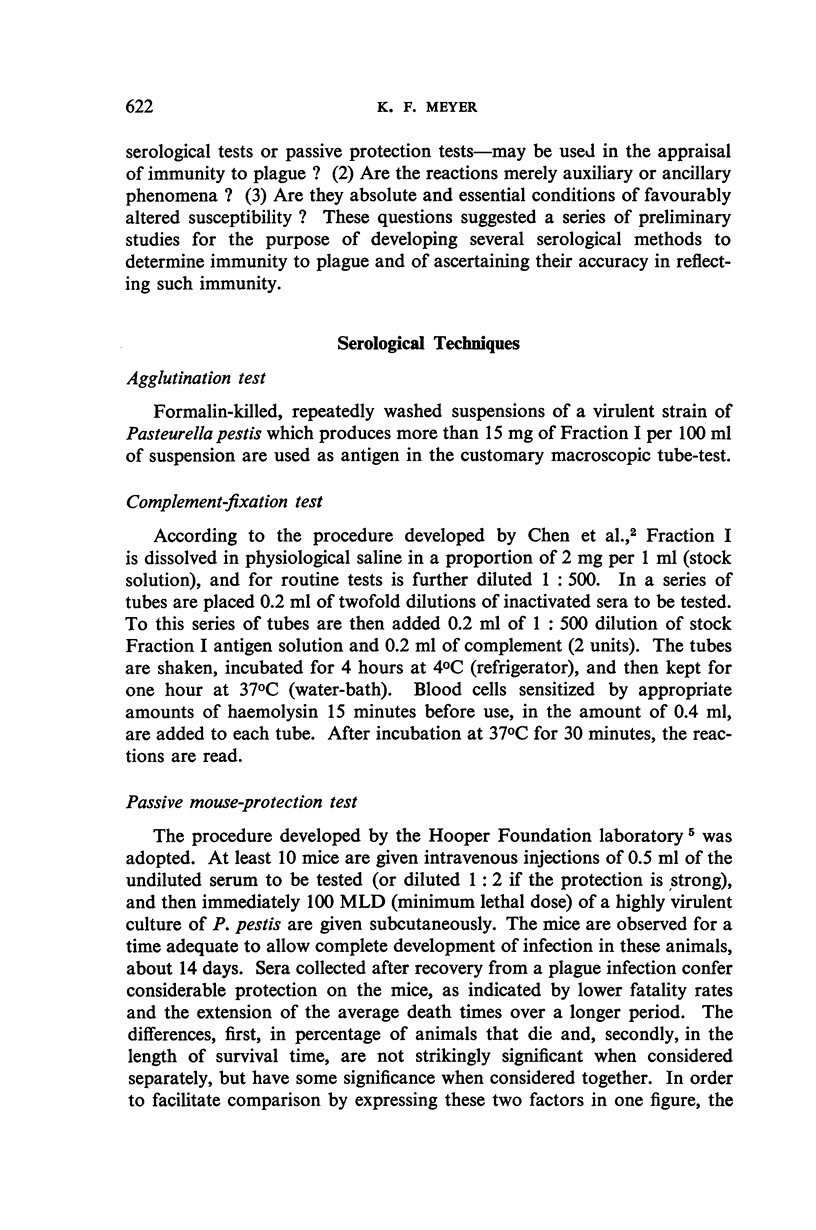
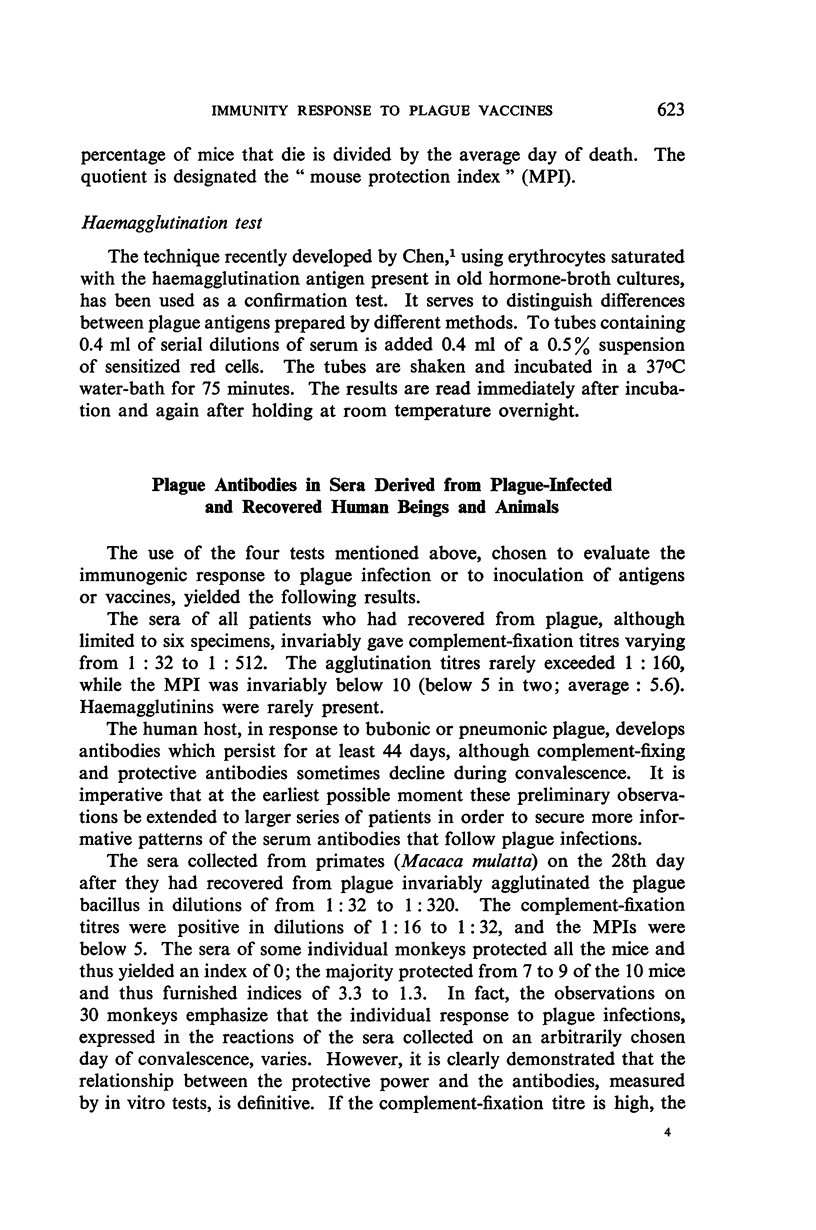

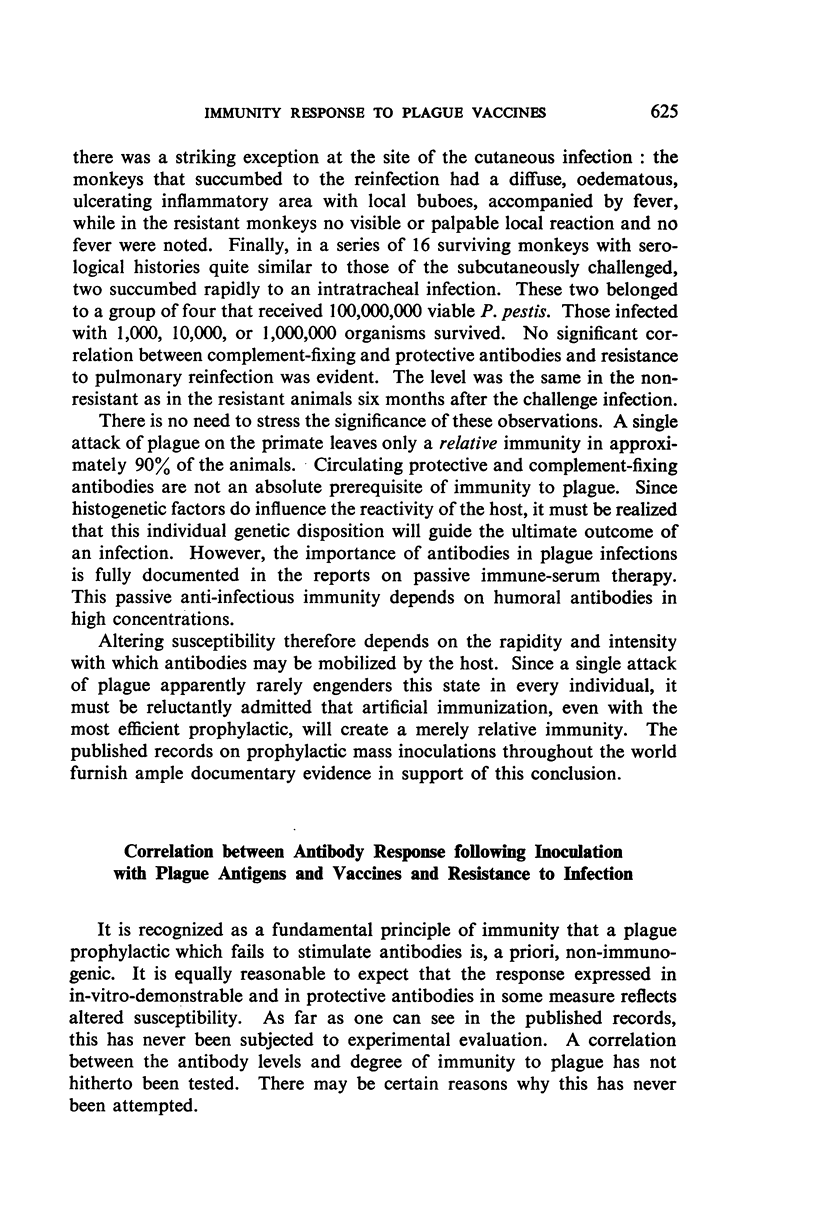
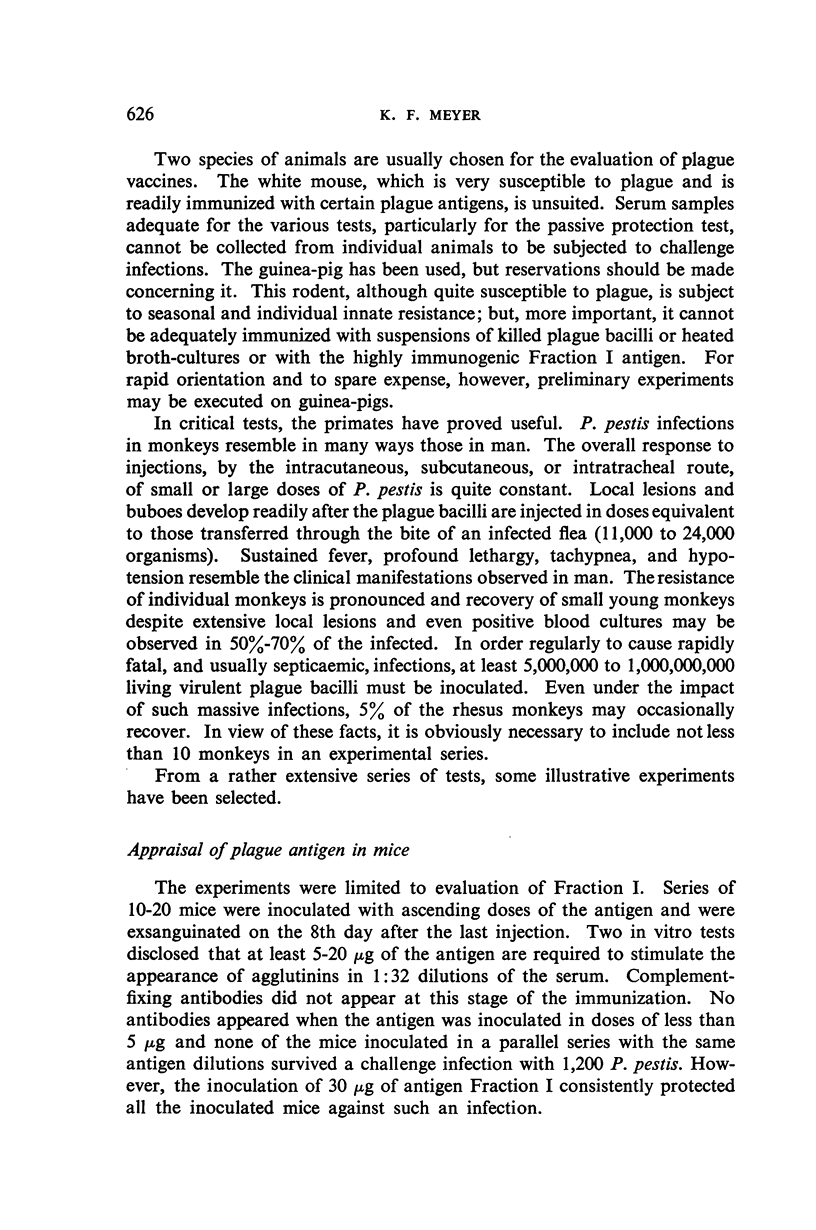

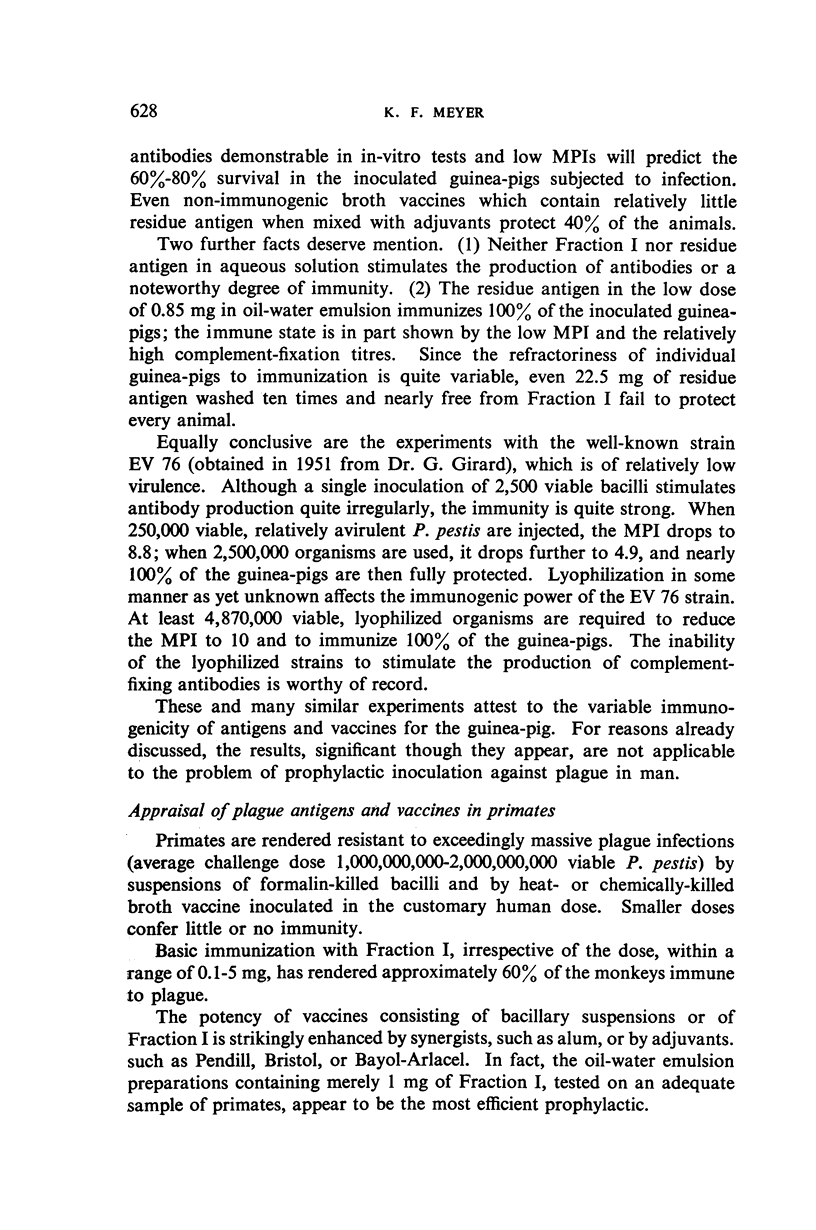
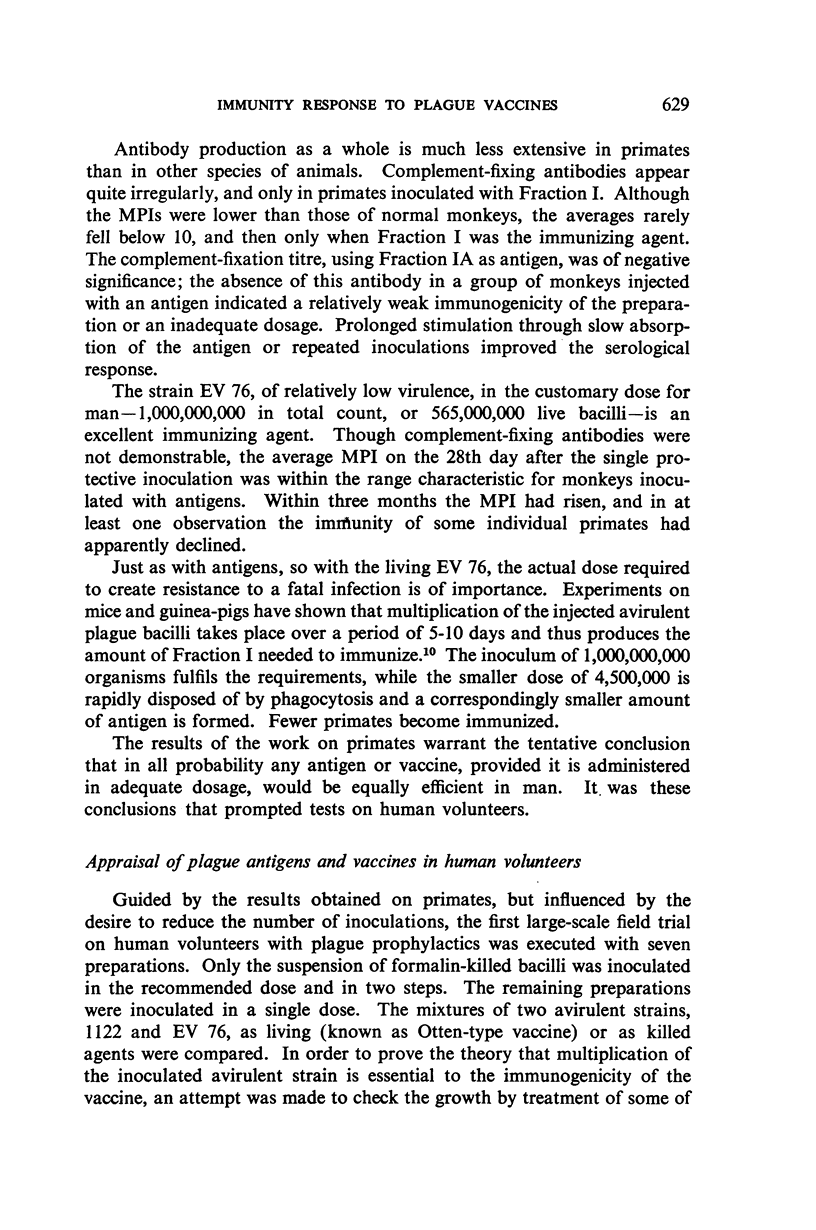
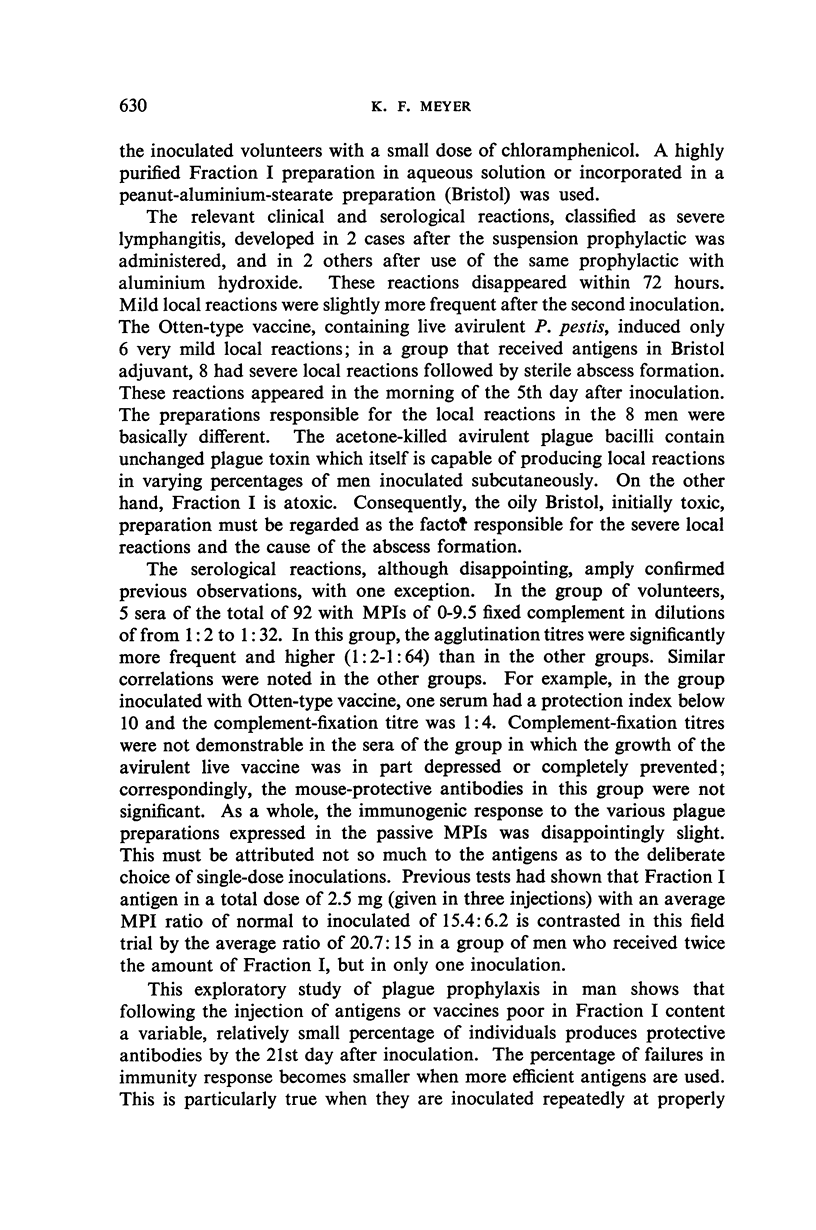
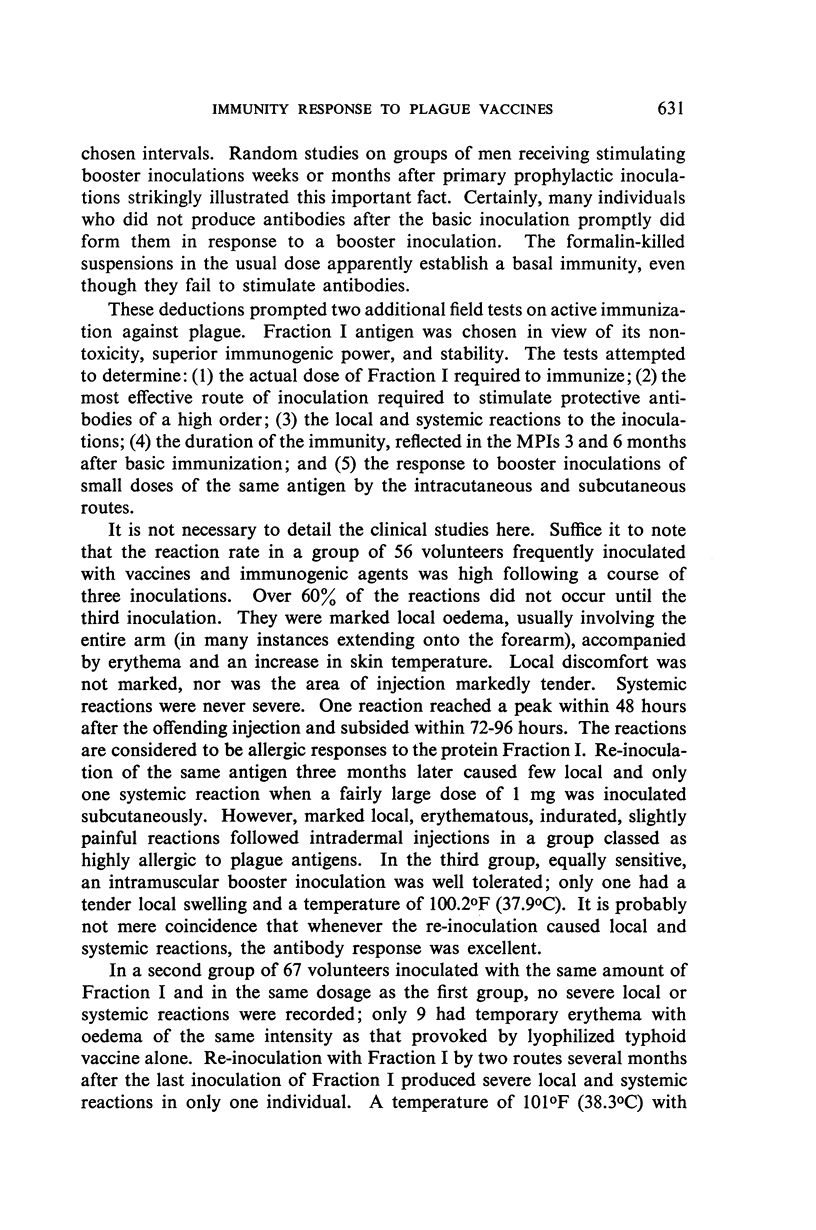
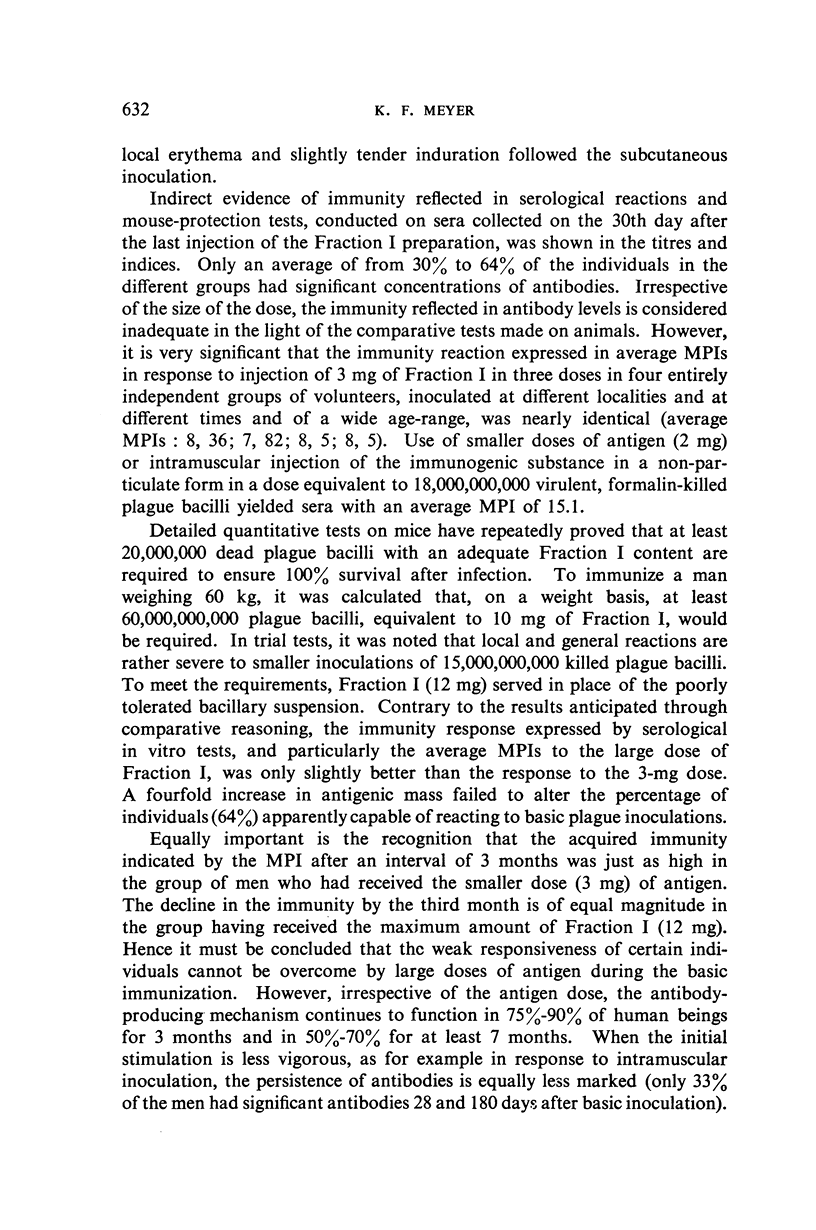
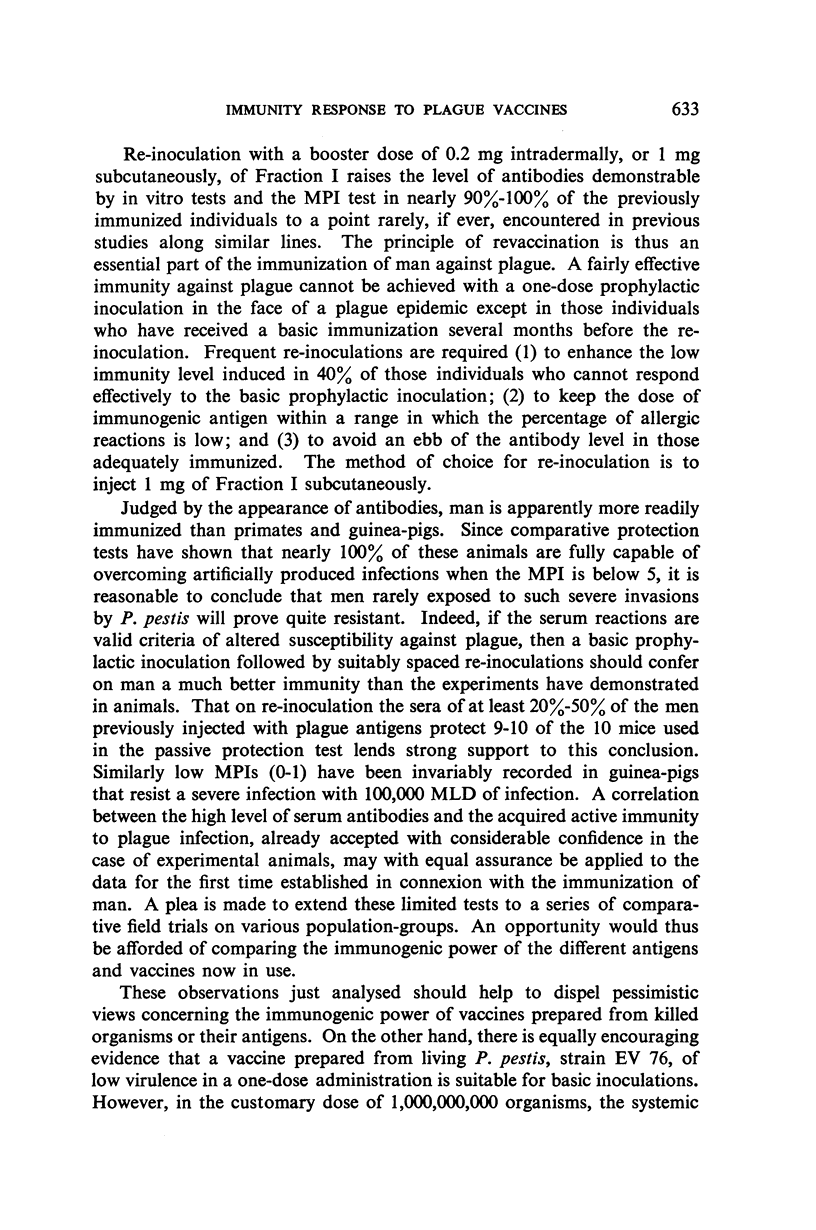
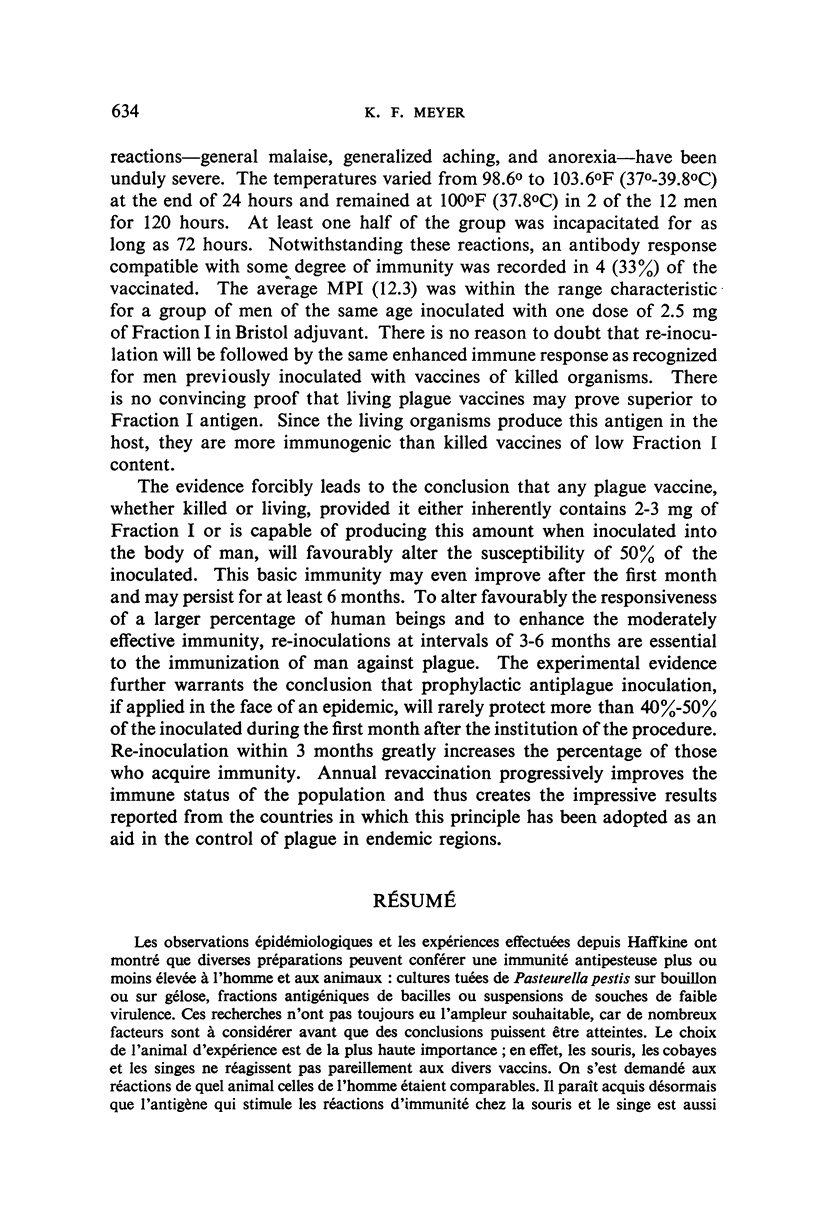
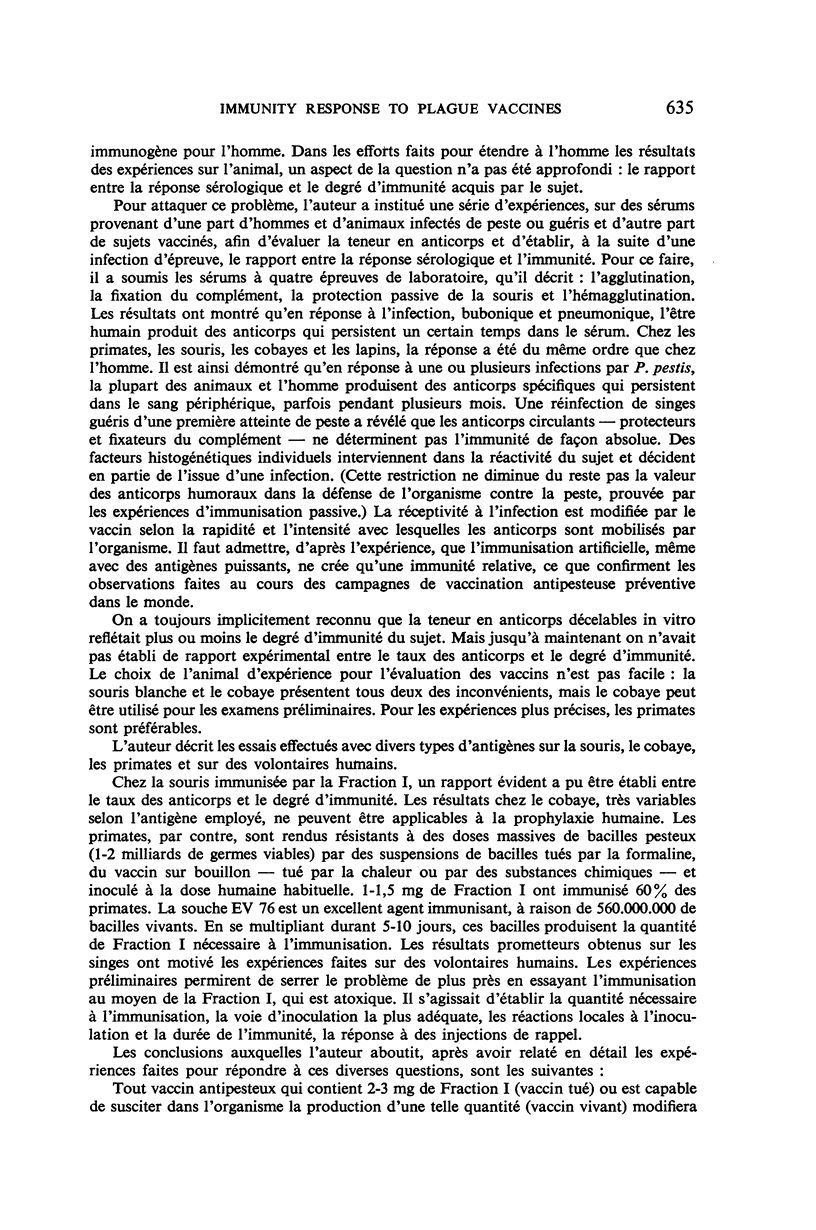
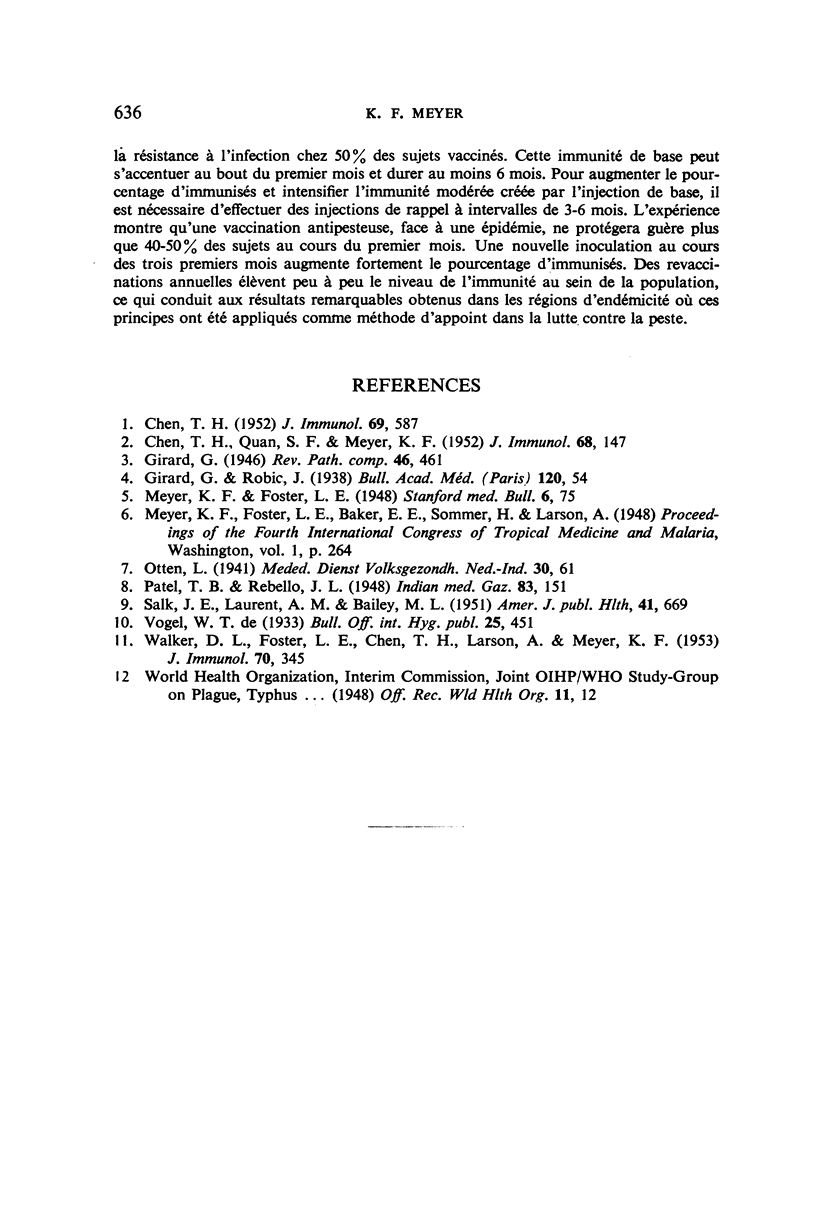
Selected References
These references are in PubMed. This may not be the complete list of references from this article.
- CHEN T. H., QUAN S. F., MEYER K. F. Studies on immunization against plague. II. The complement-fixation test. J Immunol. 1952 Feb;68(2):147–158. [PubMed] [Google Scholar]
- CHEN T. H. Studies on immunization against plague. IV. The method of the hemagglutination test and some observations on the antigen. J Immunol. 1952 Dec;69(6):587–596. [PubMed] [Google Scholar]
- KORNGOLD L., STAHLY G. L., DODD M. C., MYERS W. G. The comparative retention of antigen in the skin of immune and normal rabbits as determined with egg albumin labelled with radioactive iodine. J Immunol. 1953 Apr;70(4):345–351. [PubMed] [Google Scholar]
- SALK J. E., LAURENT A. M., BAILEY M. L. Direction of research on vaccination against influenza; new studies with immunologic adjuvants. Am J Public Health Nations Health. 1951 Jun;41(6):669–677. doi: 10.2105/ajph.41.6.669. [DOI] [PMC free article] [PubMed] [Google Scholar]


